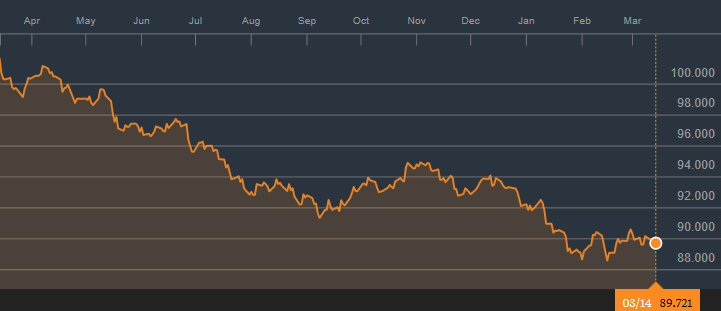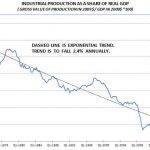Given all the pro-growth policy developments over the past year, the US dollar’s steady tumble sticks out like a sore thumb. Over the past 12 months, the dollar has lost about 8% against a basket of currencies represented by its major trading partners. This should not be the case, according to conventional economic thinking.
Figure 1 US Dollar Index March 2017-2018

By all accounts, the U.S. dollar should have received a considerable boost from several different quarters:
The irony is that Trump’s “American First” policy has not stemmed the dollar slide as expected. Americans have always taken pride in the strength of their currency worldwide, yet all these policy thrusts have had no impact on reversing recent trends.
Barry Eichengreen, Professor of Economics at the University of California, Berkeley, asked himself the same question.[1] He went through a litany of possible explanations. One explanation considered the possibility that the Fed is way behind the curve in not raising interest rates fast enough to ward off inflation. That is, rates should be higher than they are now and that would attract demand for the currency. Given that inflation is quite tame, he does not believe Fed policy lies at the core of why the dollar languishes.
Another set of explanations he looked at included:












Leave A Comment